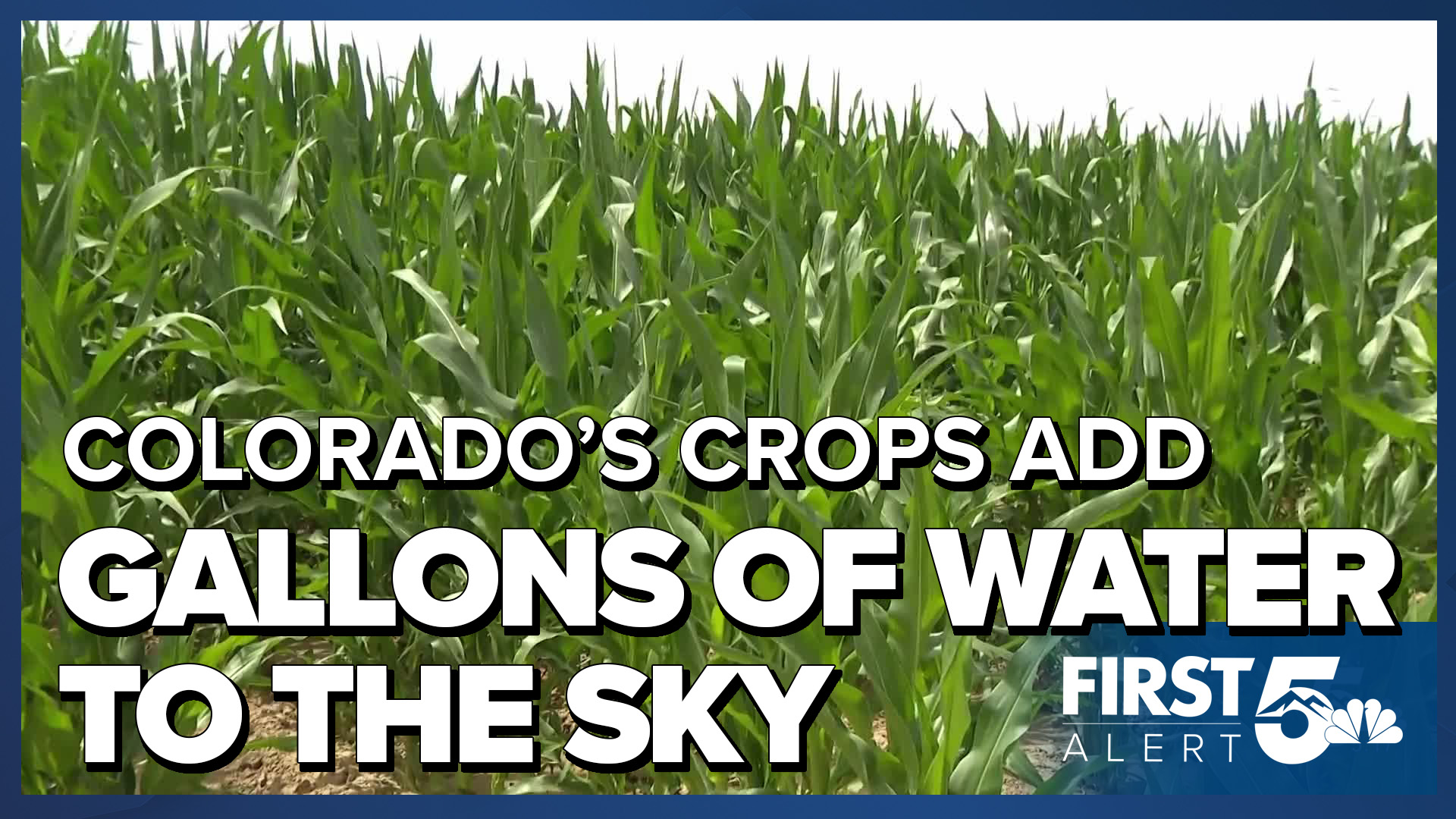My grandmother was born in Olathe, Colorado, and many Coloradans know about the sweet corn the farmers in that area produce.
What you may not know is that one acre of this summertime crop can pump 3,000 gallons of water into our atmosphere in a single day.
That added humidity affects our weather. It can cause serious thunderstorms.
Thunderstorms need a combination of plenty of moisture and plenty of heat. Corn gives us both.
"I don't see as much humidity coming off other crops as compared to corn...especially a variety like that how tall it gets...and it just really holds in the heat and the humidity...and like I said I'm standing 3-foot away from it and it feels like an oven in there," Rocky Musso, a Pueblo-based farmer, said.
Corn "sweats" through little pores in its leaves. So do other crops. It's the way plants breathe. In order to take in carbon dioxide, the plant needs these little pores to be open. And that's when some water evaporates from the plant.
Other summertime crops also do this. But corn is particularly potent, sometimes increasing humidity close to the corn field by 30 to 40%. This is especially true in July when the corn is rapidly growing and maturing. But that humidity bump goes down once you move a town or two over from the cornfields.
Colorado farmers plant about 1.5 million acres of corn per year according to data from the USDA. In an extreme scenario, this means an extra 6,000 Olympic-sized swimming pools worth of water could be added to the atmosphere in Colorado in a single day.
Although most of our moisture comes from weather patterns like the monsoon, the added moisture from corn sweat can still tip the scales. Increasing local humidity makes the environment near corn fields slightly more unstable. Ultimately you feel hotter, and storms become more likely.
The impact of corn sweat in Colorado has actually been studied. In 1989, Colorado State University released a study on the impact of crop land in northeastern Colorado. They found evidence for increased thunderstorm severity over and near the crops, particularly after they'd been watered. Watering increases corn sweat.
Next time your summer barbecue gets put on hold from a storm, you can partly thank that tasty corn you have on the grill.
This story was reported on-air by a journalist and has been converted to this platform with the assistance of AI. Our editorial team verifies all reporting on all platforms for fairness and accuracy.
____
Have a question or story idea you would like the First Alert 5 Weather team to consider? Email: weather@koaa.com
Watch KOAA News5 on your time, anytime with our free streaming app available for your Roku, FireTV, AppleTV and Android TV. Just search KOAA News5, download and start watching.




